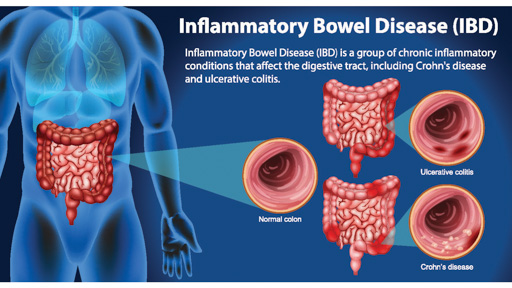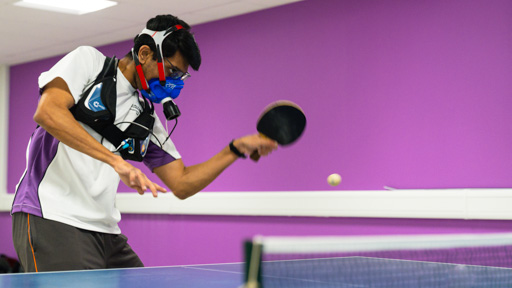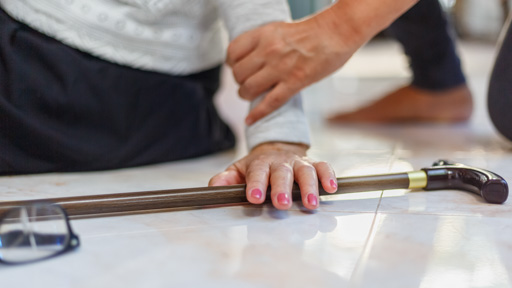Cherry Juice
Exercise Health and Wellbeing Research Group
Our research group aims to improve health and wellbeing through exercise, nutritional supplementation, and general wellbeing activities. We have a diverse range of research occurring from forest bathing to performing high intensity exercise for improving health and wellbeing. We have recently acquired a Gait Real-time Analysis Interactive Lab (GRAIL) which is a gait lab and is a total package solution for gait analysis and training. With this, we have a new emphasis on healthy ageing and is a growing subgroup of research within this research group.
Members of this group embrace varied domains of sports and exercise related research including exercise physiology, clinical biomechanics, sport and exercise psychology, clinical nutrition and sports nutrition.
What we provide:
- Knowledge and skills in exercise, health, and wellbeing research
- A forum for collaboration and research mentoring
- First class research facilities
- Postgraduate research supervision
- Space to stay up to date with one another and our wider networks.
Case studies
Lifestyle Interventions for Cardio-Metabolic Health
Background
Globally, cardio-metabolic diseases and their associated complications are the leading cause of mortality and morbidity, and also the single largest contributor to health care expenditure. Physical activity and nutritional interventions have been widely researched as preventative and therapeutic lifestyle modifications against cardio-metabolic diseases. Phytochemicals derived from plant-based foods have shown antioxidant, anti-inflammatory, anti-hypertensive, anti-hyperglycaemic and lipid-lowering properties. Perhaps, combining diets with phytochemical-rich foods alongside physical activity, as holistic lifestyle modifications may be more effective.
We looked to see if a phytochemical rich food, Montmorency tart cherry (MTC), could improve markers of cardio-metabolic health when consumed by healthy human participants and those with Metabolic Syndrome. Additionally, we also observed cardio-metabolic effects after combining MTC juice consumption with sub-maximal exercise.
What did the researcher do?
First, we asked healthy human participants to cycle at an intensity corresponding to their individual peak fat oxidation rate (FATMAX), whilst consuming MTC juice for 20 days. Then, we monitored fat oxidation rate and other markers of cardio-metabolic health (glucose, insulin, lipid profile, cardiovascular haemodynamics and arterial stiffness).
We then observed changes in markers of cardio-metabolic health in humans with Metabolic Syndrome after acute and prolonged (7 days) consumption of MTC juice.
Lastly, we attempted to delineate the mechanisms of action associated with MTC and cardio-metabolic health, using a Caenorhabditis elegans model.

What has the research found?
The most clinically important finding of this research showed 7 days MTC juice consumption significantly reduced 24-hour ambulatory blood pressure (gold standard) in humans with Metabolic Syndrome. Hence, these findings indicate MTC juice may be used as an anti-hypertensive intervention.
There was no difference in fat oxidation rate or markers of cardio-metabolic health when combining juice supplementation with exercise at FATMAX in healthy participants.
Find out more
This is an ongoing area of research with other dietary interventions, variations of physical activity and clinical populations. Please contact Dr Terun Desai for further information and possible collaboration opportunities.
Inflammatory Bowel Disease
Background
Inflammatory bowel disease (IBD) is a condition that causes inflammation and irritation in the gastrointestinal tract. The two main types of IBD are ulcerative colitis (UC) and Crohn’s disease (CD) which exhibit similar disease characteristics. However, with CD, inflammation is present along the lining of the digestive tract, whereas UC mediates inflammation in all aspects of the digestive tract and is primarily observed in the colon. One in 123 people in the UK are currently living with IBD. The cost to the NHS is high and has been estimated to be around 1.2-1.3 billion per annum. The remitting nature of IBD influences psychological wellbeing, body image and health-related quality of life. Improving health related quality of life is a focus of IBD research. One potential way to do this is through increasing physical activity. Therefore, we have focused our research to explore these areas with an aim to help inform physical activity guidelines for adults with IBD.
What did the researcher do?
We have conducted a feasibility study exploring the feasibility and acceptability of doing 12-weeks of high intensity and moderate intensity exercise training in adults with Crohn’s disease. Following this, we have been exploring the perceptions, barriers, beliefs and motivators to physical activity in IBD for both patients as well as health care professionals through survey-based research.

What has the research found?
The feasibility study was successfully completed and the findings suggest that a multi-centre trial of supervised exercise training is feasible in the UK and that exercise remains a potentially useful adjunct therapy and lifestyle behaviour in CD. Our recent survey exploring the perceptions, barriers, beliefs, and motivators to physical activity has shown that adults with IBD do not have sufficient information to help understand whether doing physical activity is of benefit to their health.
Find out more
This is an ongoing area of research as well as exploring nutritional interventions for adults with IBD. Please contact Dr Lindsay Bottoms for further information and possible collaboration opportunities.
Forest Bathing
Background
Forest bathing is one approach to enhancing human, and environmental, health within the interdisciplinary science of forest medicine. The practice of forest bathing centres upon activities which enhance connection to nature, connection to self, and which also enhance environmental care and reciprocity. Forest bathing is an antidote to nature deficit disorder, it affords quiet enjoyment, and deep connection to nature and place, and it provides space for people to reconnect with themselves (e.g., cognitive, and emotional restoration) and with other people (e.g., mutual awareness and understanding). Forest bathing also represents a form of nature activism as not only does it connect people with nature, but it also encourages a ‘leave no-trace and nurture’ policy and a move away from anthropocentric perspectives.
What did the researcher do?
There are a number of current research projects being led by Dr Stephen Pack at the University, which focus on participant and practitioner wellbeing. For example, we are currently working with an organisation in Canada, which provides forest bathing opportunities for people living with physical disability, to explore the impact of forest bathing on wellbeing and identity. We are also exploring the occurrence, and experience, of environmental epiphany as a result of forest bathing. Also, we are exploring the challenges experienced by forest bathing guides in creating and leading sessions.

Find out more
These are ongoing areas of research. Feel free to contact Stephen Pack to find out more and for recent updates.
Physiological Thresholds Training
Background
Cardio-respiratory fitness is quantified as the ability to breath and use oxygen during exercise, or maximum oxygen uptake (VO2max). VO2max is indeed a strong predictor of health, and small increases in VO2max can have marked reductions mortality and morbidity. The best way to increase VO2max is through exercise training – but the effects are heterogeneous: for a given training dose, some will experience substantial increases in VO2max, but others will see no change, or even a decrease, in VO2max. We have looked at why this happens and, more importantly, what can be done to reduce the number of people that do not show an increase in VO2max following a training programme.
What did the researcher do?
We first reviewed the literature, finding that a myriad of factors can affect the changes in VO2max following a training. Some are ‘biological,’ which cannot be changed, such as your age or sex, but other factors known to affect VO2max relate to the way we train and can be manipulated. Specifically, how the way the intensity of exercise is set during a training programme may impact subsequent changes in VO2max.

What has the research found?
In this body of work, we have found that:
- A range of factors may affect changes in VO2max following a period of training, some are biological, some methodological.
- Methodological factors relate, primarily, to how training is prescribed. How the intensity of exercise is determined can have an effect on VO2max.
- Setting the intensity of exercise relative to induvial thresholds results in more consistent responses to exercise, compared to setting the intensity relative to a generalised marker of exercise intensity (e.g., as a percentage of maximum heart rate).
- The more consistent responses to exercise when intensity is set relative to physiological thresholds accumulate over time, and indeed exercise training programmes prescribed relative to physiological thresholds appear more effective at increasing VO2max.
Find out more
This is an ongoing area of research. Feel free to contact Daniel Muniz to find out more and for recent updates.
Judo-based Safer Falls for Older Adults
Background
Falls represent a significant concern for both the elderly and society as a whole. By the year 2030, it is projected that the global population of individuals aged 65 and above will reach 1 billion, constituting 13% of the total population. This demographic shift poses societal challenges and underscores the urgency to discover effective approaches for enhancing the well-being of older individuals.
Statistics reveal that approximately one-third of those aged over 65 and half of those aged over 80 experiences at least one fall annually. Notably, falls are the leading cause of injury-related deaths among the elderly, imposing a significant toll on healthcare resources. In the UK, this amounts to an annual cost of over £2 billion for the NHS, with more than four million bed days being affected. In the specific region of Hertfordshire, there were 75,850 reported falls in 2017, and this figure is projected to rise by 62% to 122,568 falls by 2041.
There is compelling evidence indicating a strong link between the fear of falling and the occurrence of falls. By reducing the fear of falling, the number of falls can be effectively decreased.
Judo is a sport that imparts valuable skills in safe falling techniques to its participants. In judo, individuals learn how to unbalance their opponents and execute throws while also being taught how to maintain their own balance, safely manage falls, and efficiently get back on their feet. This skillset could prove beneficial for older individuals seeking to diminish their fear of falling. There are numerous judo coaches who possess the necessary training and qualifications to instruct people on how to maintain balance, safely handle falls, and regain their footing, across the world. This approach has been shown to address the challenge of reducing the fear of falling in older adults, while also yielding additional physiological benefits associated with exercise, such as increased bone mineral density and improved muscle strength.
What did the researcher do?
We collaborated with colleagues from the i-dojo research unit to review the judo based falling projects around the world and considered that the judo-based solution with the greatest potential impact is the ‘Yawara chan taiso’ system developed in Japan. Based on this curriculum we ran two series of sessions with older participants. The we took our findings to Japan to share the information with the doctors who developed the system.
We were commission by the British Judo Association to develop a coach education programme. They have branded that as ‘Introducing judo to an older population – for safer falling and ageing well’. We taught the British Judo coach education workforce how to deliver the programme.

What has the research found?
That Yawara-chan taiso judo-based falls classes can significantly reduce the fear of falling in older adults after just four lessons.
That after following a course of judo-based falls exercises over nine weeks, participants could safely execute a judo breakfall when falling from a standing position.
That there are sixteen similar projects around the world that we have connected together.
That Local Authorities are interested in funding judo-based falls classes to support their older residents.
Find out more
This is an ongoing area of research. Feel free to contact Associate Professor Mike Callan to find out more and for recent updates.